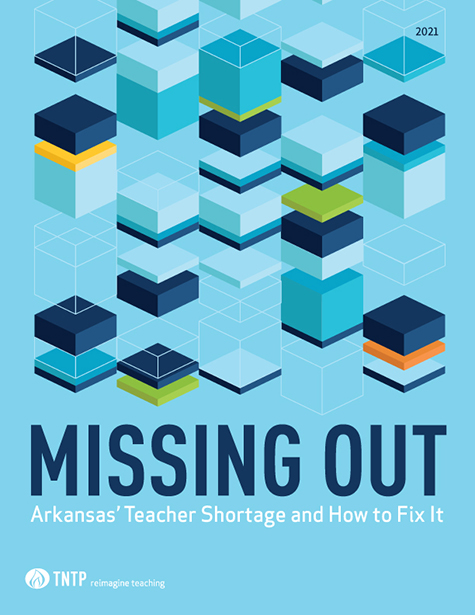Publication
Missing Out
Arkansas' Teacher Shortage and How to Fix It

Every child in Arkansas deserves an effective, qualified teacher in their classroom.
Unfortunately, far too many Arkansas students are being taught by teachers who are uncertified in the subject they are teaching. In this report, we analyze the extent and potential causes of Arkansas’ teacher shortage and propose a series of recommendations for state policymakers.
We had two primary findings about the shortage:
- Shortages are concentrated in Southern Arkansas and the Delta region: Across Arkansas, approximately 4% of teachers are uncertified, more than double the national average of 1.7%. But the severity of the problem varies widely from district to district. Statewide, 30 districts have a workforce that includes at least 10% uncertified teachers. Of those, seven districts have more than 30% uncertified teachers, and in two districts—Helena-West Helena and Forrest City—more than half of teachers are uncertified.
- Students of color are more likely to have uncertified teachers: Shortages are primarily concentrated in districts that also serve higher percentages of Black students. Black students are more than five times more likely to attend school in a high-shortage district than white students.
Our research pointed to three main reasons for the shortage:
- Lack of academic credentials: Many of the adults already living in the communities experiencing teacher shortages cannot easily become certified teachers because they lack bachelor’s degrees.
- Low teacher compensation: For a teacher with a bachelor’s degree and no experience, starting salaries vary widely across the state, from the state minimum of $33,800 to a high of $48,282 in Springdale School District.
- Insufficient reach of incentive programs: While the Arkansas Department of Education has implemented several programs to help reduce the teacher shortage, especially in communities with large numbers of uncertified teachers, many prospective teachers aren’t familiar with program details of the programs or do not qualify. And financial incentives from the programs are not large enough or not offered at the right time.
The report also provides three recommendations to fix the problem:
- Design a supportive pathway to standard licensure for paraprofessionals, long-term substitutes, and classroom aides. State leaders should design a pathway, including academic coaching and mental health services, to standard teacher licensure for paraprofessionals, long-term substitutes, and classroom aides.
- Raise the average teacher salary statewide and reduce salary inequities across districts: In particular, the state should provide funding to help districts with high teacher shortages lower salary gaps with nearby districts.
- Design a website that clearly illustrates the state’s pathways to teaching and related financial incentives. A centralized, easy-to-navigate would help more current and prospective teachers take advantage of available programs.
We hope this research is a useful resource for policymakers, educators, and advocates. If you have any questions or would like to discuss, please contact us.
To learn more, download the report.
Additional Resources
Related Topics
Stay in the Know
Sign up for updates on our latest research, insights, and high-impact work.
"*" indicates required fields

A teacher leads a one-on-one reading session focused on strategy and engagement.
About TNTP
TNTP is the nation’s leading research, policy, and consulting organization dedicated to transforming America’s public education system so that every young person thrives.
Today, we work side-by-side with educators, system leaders, and communities across the nation to reach ambitious goals for student success.
Yet the possibilities we imagine push far beyond the walls of school and the education field alone. We are catalyzing a movement across sectors to create multiple pathways for young people to achieve academic, economic, and social mobility.